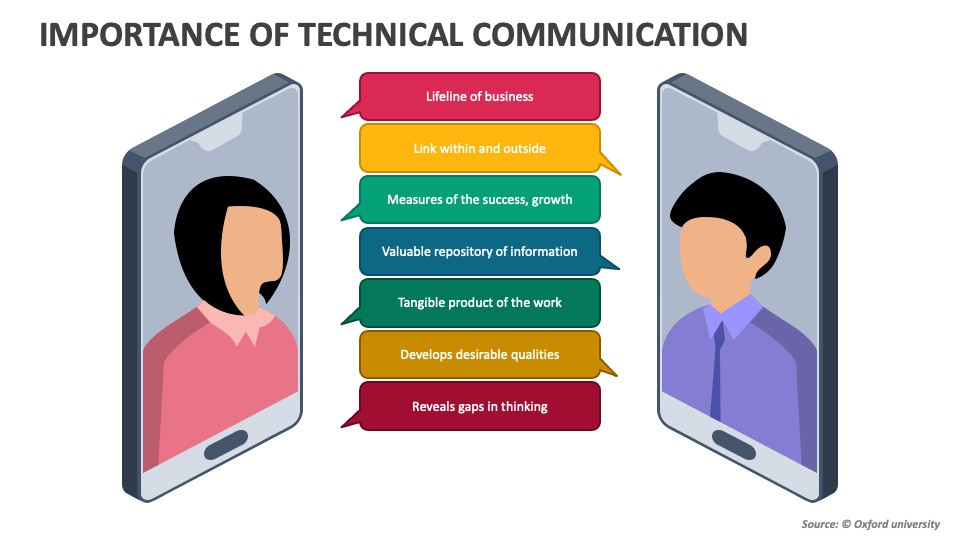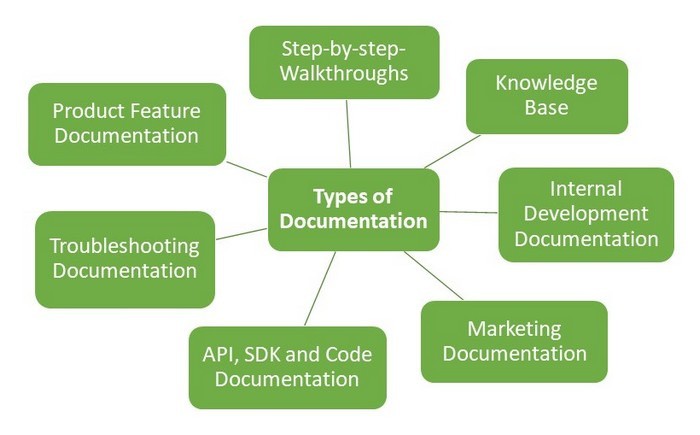
6 Types of Technical Communication and What They Mean
Communication between people is an important part of being human, and we use it for many things in our daily lives. But there are different ways to talk to people, and each one works best in a certain situation. Technical communication is one of the most common ways that people in a business talk to each other.
Technical communication is written for people who work in certain areas, like engineering and science. It follows a set of steps and uses specific language. Let’s talk more about what technical conversation looks like and why it’s important.
What does technical conversation mean?
Technical communication is a specific way of talking to people that includes giving them complicated information, usually in a business setting. This way of talking is meant to teach or tell people about specialised or technical subjects, usually those related to science, technology, engineering, or maths.
Things that make technical conversation unique
To get technical knowledge across effectively, you need to know how technical communication works. So, let’s talk in more depth about the features of this type of contact.
1. Accuracy and clarity
If you want to talk about technology, you should use clear, precise words. Because technical themes are usually hard to understand, using clear language helps make sure that complicated ideas are communicated well. This method lowers the chance of mistakes or misunderstandings, which is especially important in technical areas where small mistakes can have big effects.
2. Knowing your audience
Technical communication takes into account the amount of expertise of the audience and changes based on that. This means using easier language and explanations for people who don’t know much about the subject and using more technical language and explanations for people who do.
3. Driven by purpose
There is a clear purpose behind every piece of expert writing, like to inform, teach, or persuade. Using a purpose-driven method makes sure that the content is focused and useful. It meets the wants of the audience and fits with the goals of the communicator, which improves communication.
4. Use of technical words
When communicating technically, you need to use terms that are specific to your area a lot of the time. But it’s important to find a middle ground between using technical words and making sure the content is easy for everyone to understand. The goal is for the people who are supposed to understand the information to not be confused by a lot of unfamiliar words and phrases.
5. Different formats
Technical communication doesn’t just mean written reports, manuals, briefs, educational videos, and infographics. It includes a lot of different types of media. This variety lets communicators pick the best way to get their message across, taking into account the situation and the wants of the audience.
6. Help with seeing
One important part of expert communication is using pictures, such as diagrams, charts, and graphs. When working with complicated data or processes that are hard to explain in words alone, visuals are essential for breaking down complicated information and making it easier to understand and access.
7. Being Right
When communicating technically, it’s important to be accurate. Any mistakes can cause confusion, the wrong use of information, and even safety risks in some situations. Because of this, a lot of care and thoroughness are needed to make sure that the information given is correct and reliable.
8. Being useable
Truthfully stating technical information isn’t enough for it to work; it also needs to be given in a clear and easy to understand way. Usability means organising information in a way that makes sense, using clear headings, and giving clear, detailed, step-by-step directions when needed to make it easy for the user to understand and use.
Why technical conversation is important
Over the next 10 years, the use of technical writing is likely to grow faster than other types of writing. So, here are a few main reasons why expert communication is becoming so much more important so quickly.
Helps people understand
Technical communication is very important for breaking down complicated material into pieces that are easy to understand and get to. This is very important in areas like technology, science, and engineering where ideas and steps can be tough to understand. Also, breaking down big ideas into smaller, easier-to-understand pieces helps more people understand and use this knowledge correctly.
Makes sure safety and compliance
Good technical communication is a key part of making sure that goods are used safely and that regulations are followed. Accidents can be avoided and goods and services must meet legal and safety requirements with well-organized user manuals, safety guidelines, and procedural documents. This is especially true in industries like building, manufacturing, and pharmaceuticals.
Makes the user experience better
Good technical information, like detailed guides or instructional videos, makes the user experience a lot better. Users are able to get the most out of goods or services, which makes them happier and less frustrated. This not only keeps users coming back, but it also makes the product or service look better.

Helps with making decisions
Technical writing that is clear and to the point gives people in business and research the facts and analysis they need to make smart decisions. It helps people involved understand what different choices mean and make decisions based on strong, well-organized information, which is very important in strategic planning and policymaking.
Helps with education and training
To train and educate people, especially in technical and specialised areas, good technical communication is essential. It allows knowledge and skills to be shared in an organised way, making sure that students can use what they’ve learned in real life. This is very important in places like schools and programmes for career growth.
Helps with work and efficiency
It’s easier to be efficient and plan ahead for different operations and business processes when technical methods and processes are clearly explained. It cuts down on mistakes and confusion, speeds up work, and makes it easier to finish tasks quickly.
Makes you look more professional and trustworthy
Technical communication that is clear and accurate shows how skilled and trustworthy a person or organisation is. It shows that you care about being clear, accurate, knowing the user, the subject, and the industry, which can help a company or professional’s reputation and trustworthiness.
Encourages new ideas and teamwork
It lets professionals share information and ideas and pushes them to work together and come up with new tech. When technical ideas and results are communicated clearly, people and teams can build on each other’s work, which leads to new ideas and progress.
Reach and access around the world
Technical communication helps people from different cultures and languages understand each other, so technical knowledge can be shared around the world. In a world where business and study are done all over the world, this is becoming more and more important.
Keeps up with changes in technology
Since technology changes so quickly, it’s important to keep up with the latest developments and best practices. Technical communication is very important for sharing updates and new information, which keeps users and professionals up to date on the latest changes in their areas.
So, technical communication is very important for getting important messages across, making sure people are safe, improving experiences, making decisions, and encouraging new ideas in many areas.
Different kinds of technical writing

There are many types and formats of technical communication, and each one is used for a different reason and with a different audience. These are the most popular types of technical file formats that you should know how to use.
- Materials for teaching: like user guides and instructions for standard operating procedures (SOPs)
Instructional design materials include training manuals, online lessons, video tutorials that show how to do things or use software (for example, how to use a tool to send cold emails automatically), and online help systems that let users get help right away. - Records of study and analysis: technical reports with in-depth research results and analyses
case studies and use cases are used to show how goods or technologies can be used in the real world. - Business and professional: writing includes technical proposals that describe projects or plans, business and technical writing such as professional emails, notes, and letters, and white papers.
- Technical specifications and documentation: technical specifications include information on the product or process standards; API documentation includes things like instructions on how to set up an email delivery platform API;
- Graphics and marketing materials: infographics and other visuals are used to show technical data in technical posters, catalogues, and marketing materials that have technical product information.
- Help and informational materials: like commonly asked questions (FAQs) and answers about a product or service
There are different types of technical writing, and each one is useful for a certain audience. This makes sure that technical knowledge is easy to understand and useful.
What’s the difference between expert and general communication?
Technical communication and general communication are two different ways of talking to people that are meant for different reasons. Knowing the differences between them is important for using each one correctly in the right situation. These are the main ways that technical communication is different from general conversation:
| Aspect | General communication | Technical communication |
| Purpose and content | Broad in scope, covering a range of non-specialized topics for everyday interactions and business communications. | Focuses on conveying technical or specialized information in fields like science, engineering, and technology. |
| Audience | Directed toward a general audience without specialized knowledge. | Targeted at an audience with some degree of expertise or interest in the specific topic. |
| Language and terminology | Utilizes everyday language, avoiding technical jargon. | Incorporates specialized terminology relevant to the field. |
| Format and structure | Flexible and informal, including formats like emails and blog posts. | Follows a specific, structured format like reports, technical guides, or white papers. |
| Objective and clarity | Aims to inform, persuade, or entertain, with clarity being important but not critical. | Focuses on conveying precise information with a high degree of clarity and accuracy. |
| Visual elements | May use simple visual aids for enhancement. | Often employs detailed visuals like graphs and charts for explaining complex information. |
In general, everyday language is used in general communication, while formal, structured language is used in technical communication for particular groups of people who know what they’re talking about. Which one to use relies on the information and the needs of the audience.
Business conversation for techies
Technical communication is structured and specialised to get complicated technical information across simply and accurately to a certain group of people.
It uses specialised words and pictures, which are very important in science, technology, engineering, and medicine.
No matter the area, it is very important for getting information to each other in our world, which is becoming more complex and linked.











